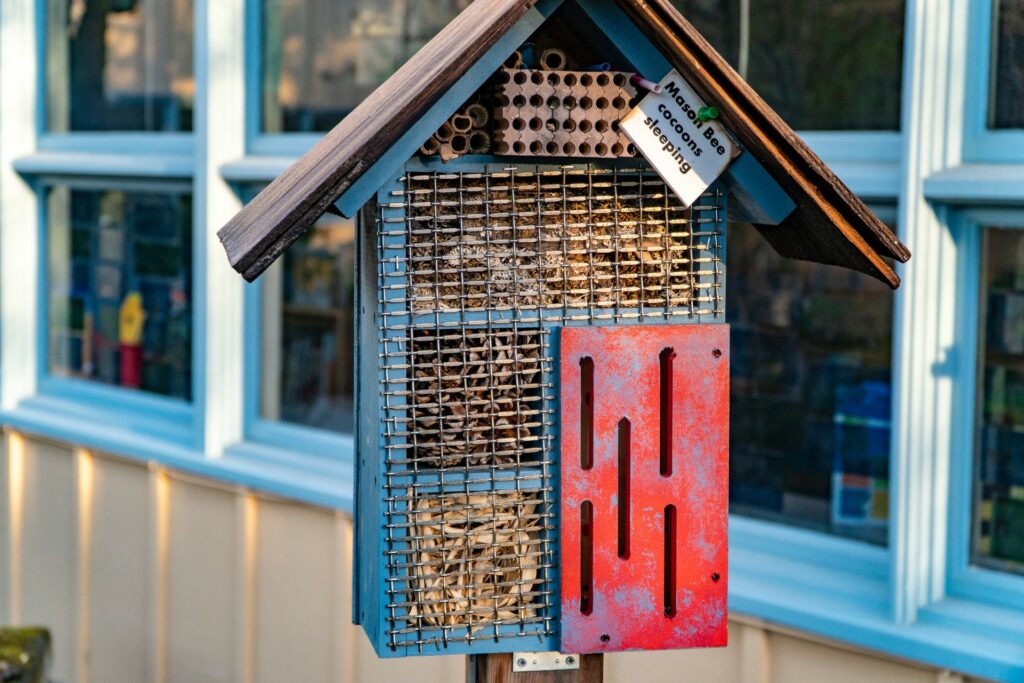Look Who’s Cocooning! Butterflies and Bees Share the Stage

As part of the science curriculum from kindergarten, metamorphosis is well-known as how a caterpillar becomes a beautiful butterfly. Although widely accepted, what is less known is that butterflies and bees are not only partners in pollination but also cocooning. Some bee species undergo complete metamorphosis, forming cocoons to protect the larvae. If you are a beekeeper or have read any literature about bees and beekeeping, you know some bee species cocoon. Although this is a well-known fact among beekeepers, few have ever seen the mysterious cocoon.
Not All Bee Species Cocoon
Although all bees go through complete metamorphosis, including the egg, larva, pupa, and adult stages, not all create cocoons.
When it comes to cocooning during the pupation stage of metamorphosis, two bee families are excellent cocoon spinners. The two species both have distinct long tongues, which many scientists believe may be one of the reasons they have cocooning as part of the process. Anyone new to bees or beekeeping may have yet to learn about long and short tongues bee species. Scientists and researchers believe cocoon building is primate behavior in solitary bees, used to survive the relentlessly hunting wasps. As years have passed, and bee species have adapted to other ways to protect the larvae, only a few still use cocooning.
The Apidae family includes honeybees, bumble bees, and stingless bees, and all this family spin to create cocoons. The other family is Megachilidae, which includes mason bees that cocoon in tube structures requiring cleaning and storing each season to keep the hive healthy. Mason bees and others in this family form cocoons that turn dark as they get dirty but can be washed in bleach, stored, and shipped. The cocoons are incredibly durable and reused by beekeepers. There are beekeeping businesses that sell premade cocoon tubes for mason bees.
Cocoons Are Designed to Protect
Since cocoons are designed to protect the larvae through the pupal stage, as bee species have found other substances available in the hive to provide protection, some species have abandoned cocooning. The substances provided by the queen are put over the cell walls that create sufficient protection. Although all species of bee have a gland near the stinger designed for cocoon building, the function of it changes from species to species and roles in the hive. Some species use this gland to build nests, and others use it to increase the release of pheromones.
Holometabolous Insects
Whether or not bees spin cocoons, they are all holometabolous insects. Holometabolous means they go through all four life stages of metamorphosis from egg to larva to pupa to adult, just like a butterfly. Between the larva and pupa stages is when the cocoon occurs to protect development and ensure arrival at the adult stage. In all cases of metamorphosis, cocoons safely seal up and protect the pupa from the elements. The pupa stage is short in bees and lasts approximately one week. However, during this short time, the organism is redesigned. The internal organs are reassembled in this time – talk about a miracle!
During a rebuild, many things can go wrong, and that is why researchers think the process is faster for bees. A long time in the pupa stage increases opportunities to be eaten, fall victim to disease, or experience harsh weather conditions. The process is expedited by an abbreviated time in that stage, and pupation happens quickly. Even after reaching the adult stage, a bee may stay in the cocoon for some time after reaching full maturity.
Four Stages of Metamorphosis
The four stages of metamorphosis most famously include the eating and fasting stages. It is a simple “store what you need, and then eat it” regiment. Bee eggs are in the fasting stage, and food is stored. When bees enter the larva stage, excessive eating is typical. The larva or eating stags are indicative of tremendous appetites and growth. Think about the book, The Very Hungry Caterpillar. The stage where he is eating everything is the larva stage. The up and down in appetite indicate storing the food and then using what is stored.
Cocoon Maintenance
Bee cocoons can become full of excrement, mites, and other dirt and debris. Cocoons will become darker in color the dirtier they become. It is essential for certain species, especially mason bees, to have clean tubes in which to cocoon each season. The tubes need to be washed and stored to prevent disease and ensure healthy generations of bees in the future. Most beekeeping providers have tubes to sell, but some seasoned beekeepers create their own tubelike structures. Either way, beekeepers are like parents for the bees, continually providing enough food, water, and places to lay eggs and ensuring the protection of the hive from harmful predators and disease. If you are interested in beekeeping, contact a local beekeeper and get involved!
